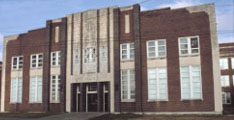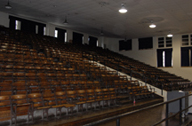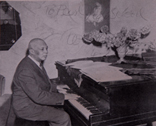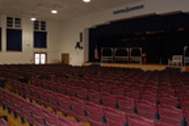

The Pearl High School Building The Pearl School opened in 1883 as the first public school for blacks in Nashville, the “Athens of the South” and the first Southern city to institute a public school system. Named for Joshua Fenton Pearl, the city's first superintendent of public schools, the primary school located at South Summer Street (Fifth Avenue South) was staffed with white teachers until 1887 when black educators were employed. In 1897, a secondary school program was added. The high school moved to a second site in 1917, located on Sixteenth Avenue North and Grant Street. The Secondary School Study’s work, occurring through the 1940s, took place at the third Pearl High School site at Eighteenth and Jo Johnston Streets, North Nashville neighborhood, just blocks from Fisk University. |
|||||||||||||||
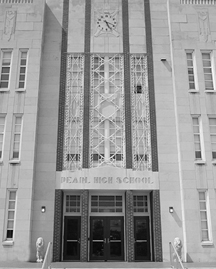 |
|||||||||||||||
From the 1946 Secondary School Study catalogue description of Pearl High School |
|||||||||||||||
Pearl High School’s curriculum was distinguished at the time for its extensiveness, yet was still somewhat conventionally organized with courses in English, mathematics, social studies, science, art, commerce, manual training, home economics, cosmetology, and music. The school’s student enrollment during the time of the Secondary School Study included a predominance of girls with 85% of the students continuing their studies at the post-secondary level. Enrollment was lower during the 1940s due to the war conditions “with many of the boys being drafted into the armed forces and many girls leaving school for new opportunities in employment.” (2) |
|||||||||||||||
|
|||||||||||||||
|
|||||||||||||||
Pearl High School represented a construction project of the Public Works Administration (PWA) and was viewed by some as a political plum for past voters’ support. As the African-American community of Nashville shifted its political allegiance to the Democrats at the national level, “President Roosevelt and the Democratic party rewarded black Nashvillians for their support with . . . a huge new Pearl High School.” (3) Included in the school facility was one of the largest auditoriums available to the African American community in Nashville. This performance venue enriched the extra-curricular offerings of the school and further established Pearl High School as a center of cultural activity for the black community. A vocational building was added in 1945 and another gymnasium was built in 1964. |
|||||||||||||||
In 1983, Nashville’s federal desegregation plan merged Pearl High School with the predominantly white Cohn High School. A secondary school complex, Pearl-Cohn Comprehensive High School, was built at a new location in north Nashville, the former site of two traditionally black schools. In 1986, the Pearl building was renamed the Martin Luther King, Jr. Magnet School. Years later and with the urging of the Pearl High School Alumni Association, this building was re-named the “Martin Luther King, Jr. Magnet School at Pearl High School.” The Tennessee Historical Commission designated the site as an historical landmark in 1992 and, in 2004, the site was officially added to the National Register of Historic Places. Endnotes: |
|||||||||||||||

an institutional member of the International Coalition of Sites of Conscience
Museumofed@gmail.com

